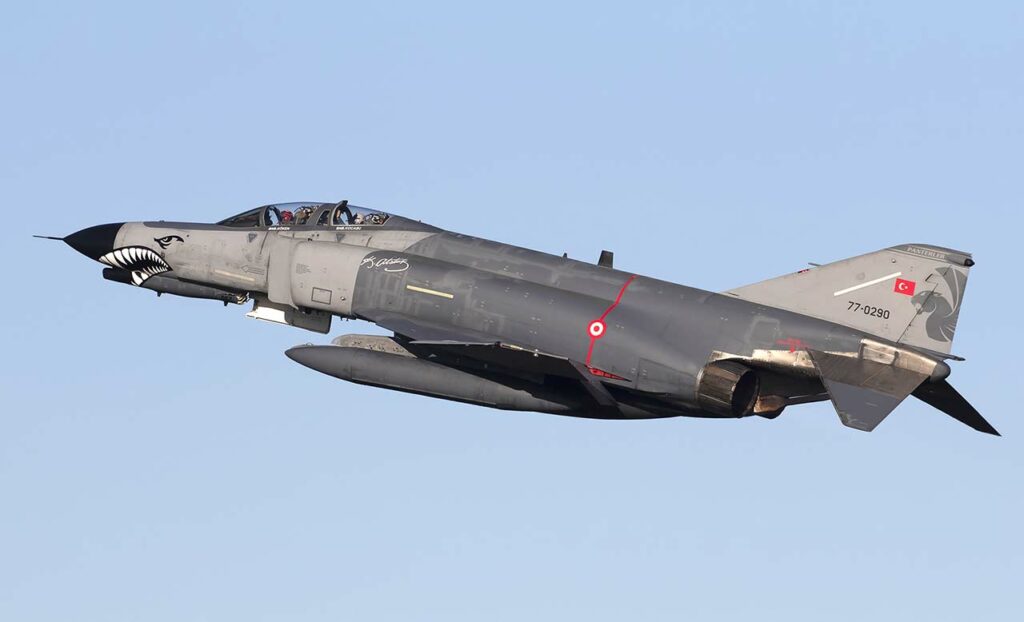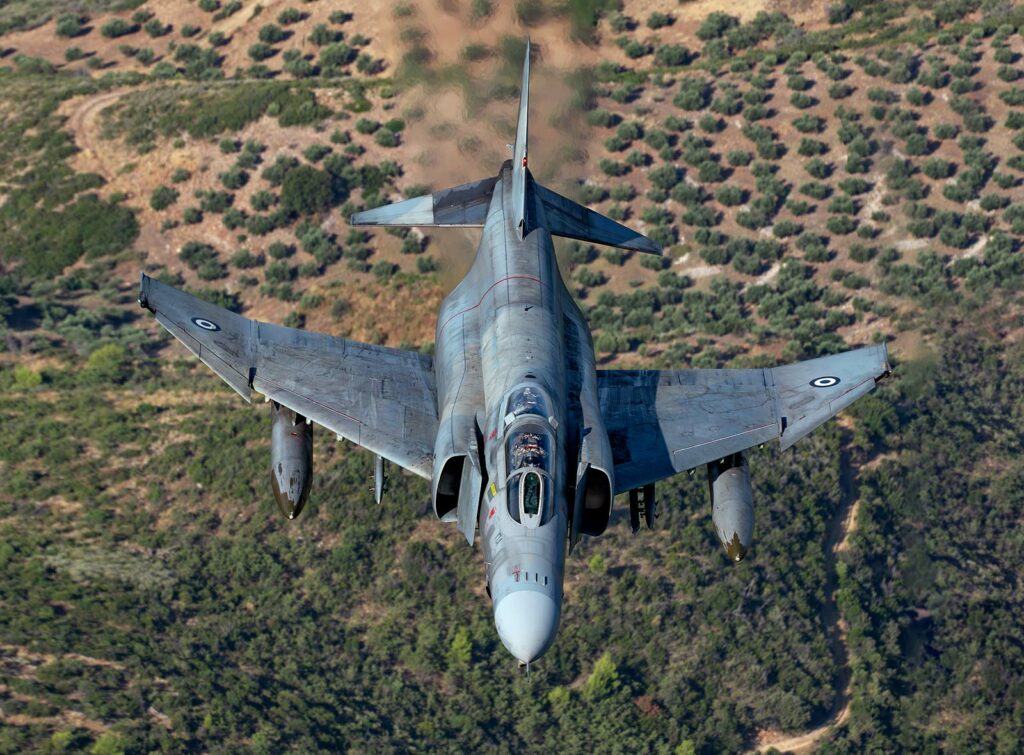The McDonnell Douglas F-4 Phantom II is an iconic twin-engine, all-weather, supersonic jet interceptor and fighter-bomber used extensively by the U.S. military.
In brief
The McDonnell Douglas F-4 Phantom II, a tandem two-seat, twin-engine, all-weather, long-range supersonic jet interceptor and fighter-bomber, was one of the most versatile fighters ever built. Introduced in the 1960s, it set numerous speed, altitude, and performance records. Equipped with twin General Electric J79 engines, it was capable of reaching speeds over Mach 2.2. The F-4 was notable for its significant payload capacity, advanced radar and avionics, and ability to carry a vast array of weapons, including air-to-air missiles, air-to-ground missiles, and bombs. Despite its initial lack of a cannon, it was later equipped with an internal M61 Vulcan in some variants. Its service across multiple U.S. military branches and numerous international forces underscores its effectiveness and adaptability.

Introduction
In the context of the Cold War and the emerging need for advanced military capabilities, the McDonnell Douglas F-4 Phantom II was developed to meet the U.S. Navy’s requirement for a supersonic fighter capable of defending the fleet against airborne threats. McDonnell Aircraft Corporation’s design, first flown in 1958, was quickly recognized for its exceptional performance and was subsequently adopted by the U.S. Marine Corps and the U.S. Air Force, becoming one of the most significant fighters of the 20th century.
Design
The F-4 Phantom II’s design featured a distinctive large, slightly swept wing and twin-engine configuration, allowing for high speed, long range, and considerable payload capacity. Its advanced radar system and avionics suite enabled it to acquire and engage targets at long distances, a significant advantage in air-to-air and air-to-ground missions. The aircraft’s robust airframe allowed for operation in various environments, from close air support to nuclear strike missions.
However, the Phantom’s size and engine design contributed to its relatively high visibility to radar and significant infrared signature, which could be a disadvantage in certain combat situations. The lack of an internal gun in early models was also seen as a drawback, which was addressed in later variants with the inclusion of the M61 Vulcan cannon.
Performance
The F-4 Phantom II’s performance was exceptional for its time. Capable of reaching a top speed of over Mach 2.2, it had a maximum range of about 1,600 miles without aerial refueling and could operate at altitudes above 60,000 feet. Its two General Electric J79 engines provided powerful thrust, enabling quick acceleration and a high service ceiling, making it a formidable opponent in air combat and an effective platform for ground-attack missions. When compared to contemporaries like the Soviet MiG-21, the F-4 demonstrated superior range, payload, and versatility, though it often faced challenges in maneuverability in dogfights.
Variants
The F-4 Phantom II saw numerous variants over its production life, tailored for different roles and users:
- F-4B/C/D: Initial variants for the U.S. Navy and Air Force, with incremental improvements in avionics and weapons systems.
- F-4E: Featured an internal M61 Vulcan cannon and improved engine performance.
- F-4G “Wild Weasel”: A specialized SEAD (Suppression of Enemy Air Defenses) variant with advanced electronic warfare capabilities.
- RF-4C/E: Reconnaissance variants equipped with cameras and sensors instead of weapons.
Each variant reflected specific operational requirements, enhancing the Phantom’s adaptability across a wide range of missions.

Military Use and Combat
The F-4 Phantom II saw extensive combat use, particularly in the Vietnam War, where it served in air superiority, ground-attack, and reconnaissance roles. It proved capable of engaging advanced Soviet-designed fighters and performing precision bombing missions. The F-4’s versatility was also demonstrated in the 1973 Yom Kippur War, the Iran-Iraq War, and other conflicts, showcasing its effectiveness in both air-to-air and air-to-ground combat.
Throughout its service life, the Phantom faced various adversaries, including the MiG-17, MiG-21, and Su-22, often proving its superiority in terms of speed, altitude, and payload capacity. Despite facing challenges in maneuverability, the F-4’s advanced weapons systems and tactics enabled it to achieve considerable success in combat.
The F-4 Phantom II was exported to numerous countries and served in several foreign air forces, including those of the UK, Germany, Iran, and Israel, among others. Over time, it was gradually phased out in favor of more modern aircraft like the F-15 Eagle and F-16 Fighting Falcon but remains in limited use in some countries.
The McDonnell Douglas F-4 Phantom II remains one of the most iconic and versatile combat aircraft in aviation history. Its widespread use and effectiveness in various roles across multiple conflicts demonstrated its exceptional design and capabilities. Though it has been largely retired from frontline service, its legacy continues in the form of lessons learned in its development, operational use, and the technological advancements it spurred in military aviation.
Back to the Fighter Jet section.